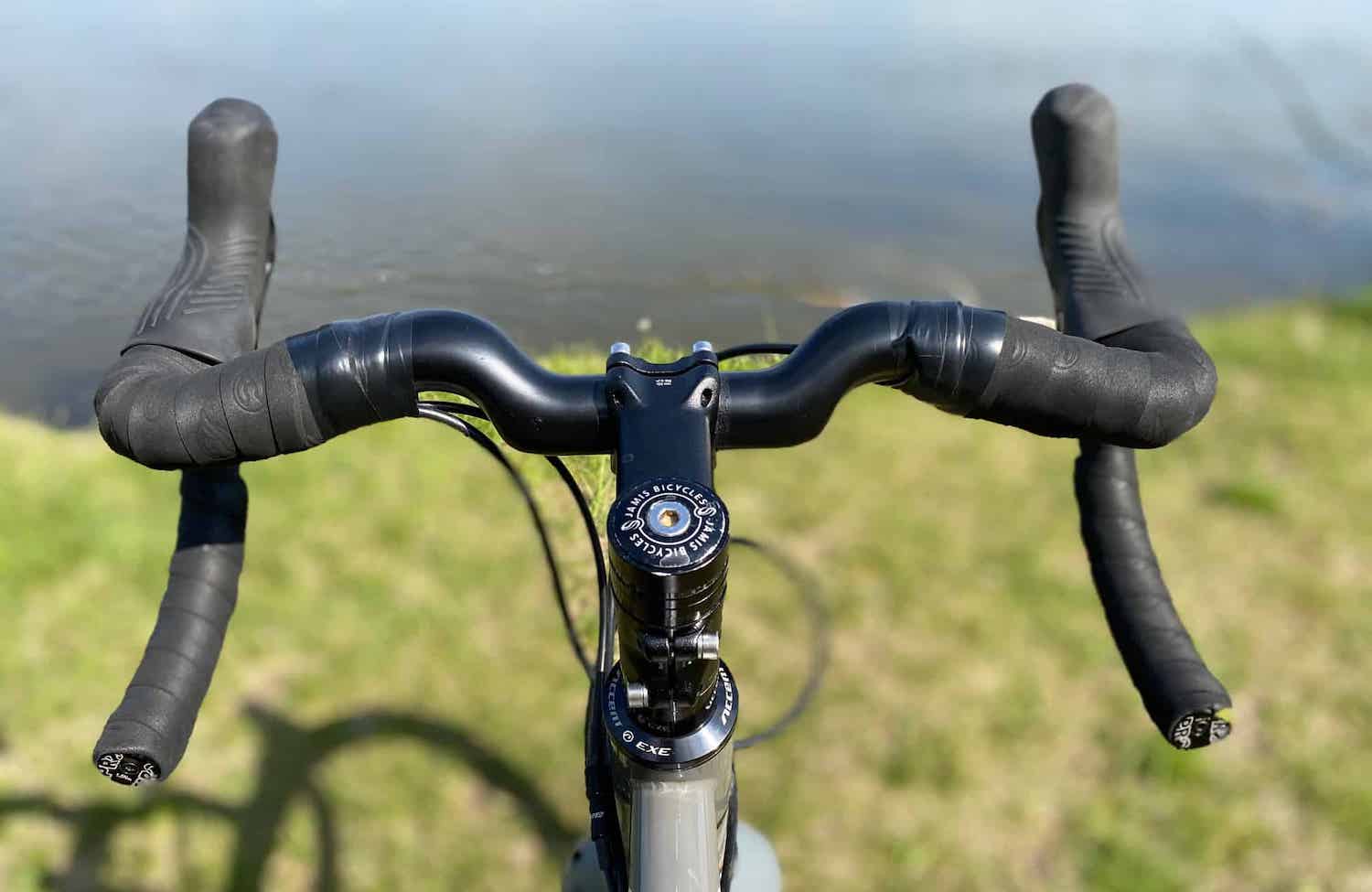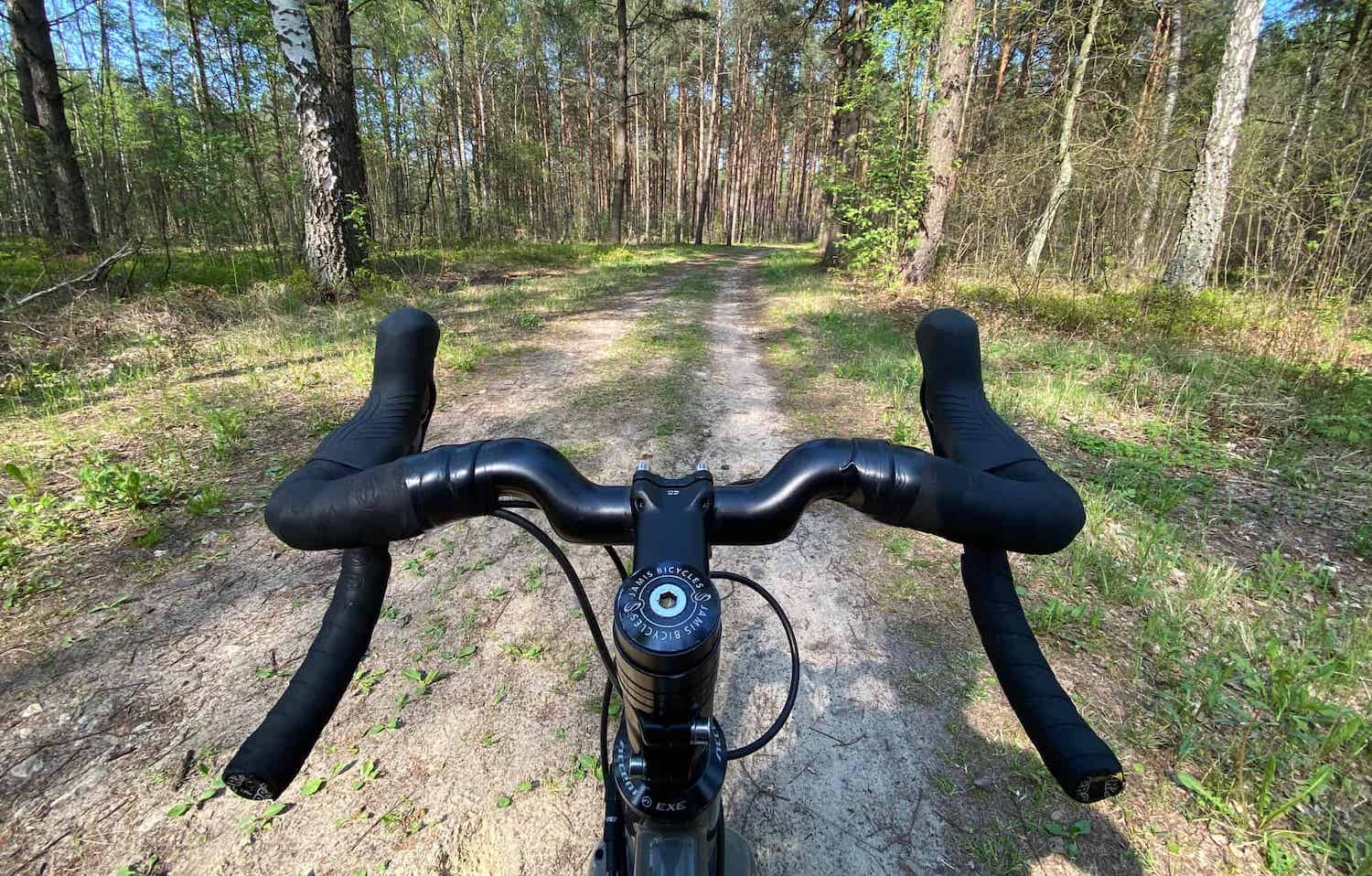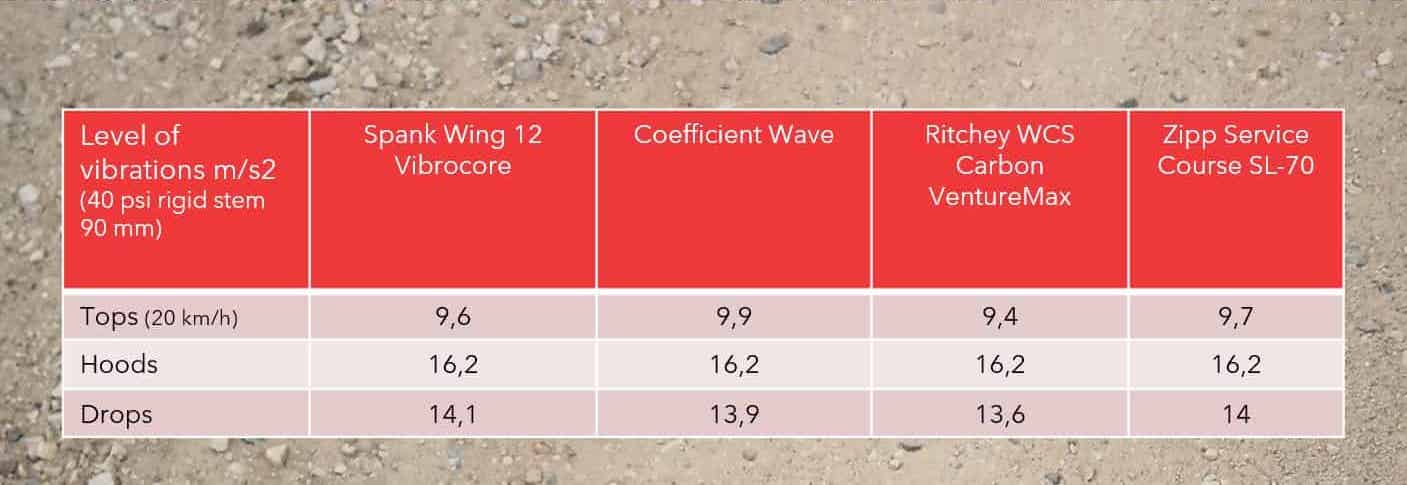Table of Contents
A handlebar is often like a saddle; you have to search long and hard for the right one, and sometimes even put in some time to get accustomed to it.
The Coefficient Wave handlebar took me a while to get used to. It has a unique design that forces you to change the way you hold your bars. But once you give in to its design, a lot of good things begin to happen.
Let’s take a closer look.
A Hard Product To Review
I’ve now tested dozens of comfort-improving bikes and products. Some of them were easy to evaluate and others needed more time and effort to fully appreciate them.
Reviewing the Coefficient Wave handlebar was actually quite a long and difficult task. I started out with excitement because I had long wanted to test the unique shape of it. Then I was disappointed by the flattened tops that forced my wrists to bend too much. But then I tinkered with the angle and height of the handlebar, and I spent many, many hours riding it until I started to really… enjoy it!
And now I’m not planning to take this handlebar off my benchmark bike.
The Shape of the Coefficient Wave Handlebar
The Coefficient Wave handlebar is an interesting take on the drop bar design.
Normally, handlebars differ in terms of the general shape of the bar tops. Sometimes the bar tops are flat, sometimes they’re perfectly round. Sometimes there is a slight back sweep, and sometimes you can even find a forward sweep.
The main premise behind the shape of the Wave handlebar is to make holding the bar tops ergonomic.
Try this quick test. Stand up straight with your arms relaxed. Now lock your wrists in their natural resting position and lift your arms up like you were about to grab onto a handlebar. You should see that your hands are naturally sitting in a grip position with your thumbs higher than your little fingers.
The Wave handlebar essentially replicates this hand position in the bar tops.
But the benefits do not stop there. Holding these bar tops also brings your elbows closer to your sides to improve your aerodynamics. And in my testing so far, I’ve found this is simply a better way of designing bar tops.
Flattened Bar Tops
The flat tops of a drop bar present a lot of challenges for handlebar designers.
When you have round tops, you can easily rotate the handlebar forward or back to find the best angle for the drops (without affecting the shape of the bar tops). But with flat tops, you’re locked in place. Once you set the optimal bar top angle for you, you need to hope the bar angle at the drops is perfect.
I thought that the angle of the Wave bar tops was wrong at first. It felt too steep on my wrists. But after many, many hours of experimenting with the angle of the bar tops, I finally settled with the angle that Coefficient recommended in the first place (drops exactly parallel to the ground).
Coefficient Wave Handlebar Setup
The Wave handlebar has a slightly longer reach (77mm) than I am accustomed to, and a moderate drop (120mm) as well.
I found the Wave was best when I lowered it by 10 to 15mm (by removing headset spacers). This is because the elevated bar tops make your ride position much more upright.
After lowering the handlebar, I found myself enjoying the hoods and drops too. I didn’t mind the slightly lower ride position because I could easily switch between them and the comfortable bar tops.
The other thing that I enjoy is the fact that Wave has a very moderate, 4-degree flare in the drops. This is more than enough for me; I don’t need more flare, even on the roughest terrain.
The Coefficient Wave Bar Tops
The elevated bar tops are the most enjoyable thing about the Wave handlebar.
You can grip them at the bottom of their rise, in the middle (where you’re supposed to), and even at the top of the rise, which I found oddly comfortable. You can constantly change your hand position depending on how your hands feel, preventing hand fatigue and numbness.
To fully appreciate the benefits of the elevated tops, you should ride with your thumbs on top of the handlebar. It’s a very comfortable position.
Of course, there are situations when you need more grip, and then you should grab the bar tops with your thumbs underneath. But in those riding conditions, you will probably be better off riding in the hoods or drops. After all, the tops are for cruising and relaxing, not for conquering challenging terrain.
Vibration Test Results
You can see my vibration measurement procedure & outdoor test courses HERE.
When I vibration tested the Coefficient Wave handlebar, I found it damped fewer vibrations than other drop bars in my field test. However, I believe it was within a reasonable margin.
The Wave was transmitting about 4.9% more vibration than the Ritchey VentureMax carbon on the bumpy forest trail (average). And it was transmitting just 2.4% more on the fast gravel road (average).
You can read more result analysis in my aluminium vs carbon handlebar article HERE.
Installation Problems
Due to the unique shapes and angles of this handlebar, I found it almost impossible to route both the brake and cable lines through the handlebar. In the end, I settled for the brake cables inside the handlebar, and the derailleur cables guided outside of the handlebar. Not the best solution.
One last thing is the carbon itself. You have to be super cautious of the force you are applying when installing the brake/shift levers because otherwise, you can easily damage the carbon. The same goes for the stem face plate; please only tighten to the manufacturer’s torque recommendations.
Summary
If you’d like additional bar top positions, I can highly recommend the Wave handlebar.
Like I said in the beginning, the Wave handlebar is the hardest thing I’ve had to review. There were moments when I thought that I would not recommend this handlebar because I was struggling to find a good fit.
But after a month, something clicked, and I do not intend to change them anytime soon.












